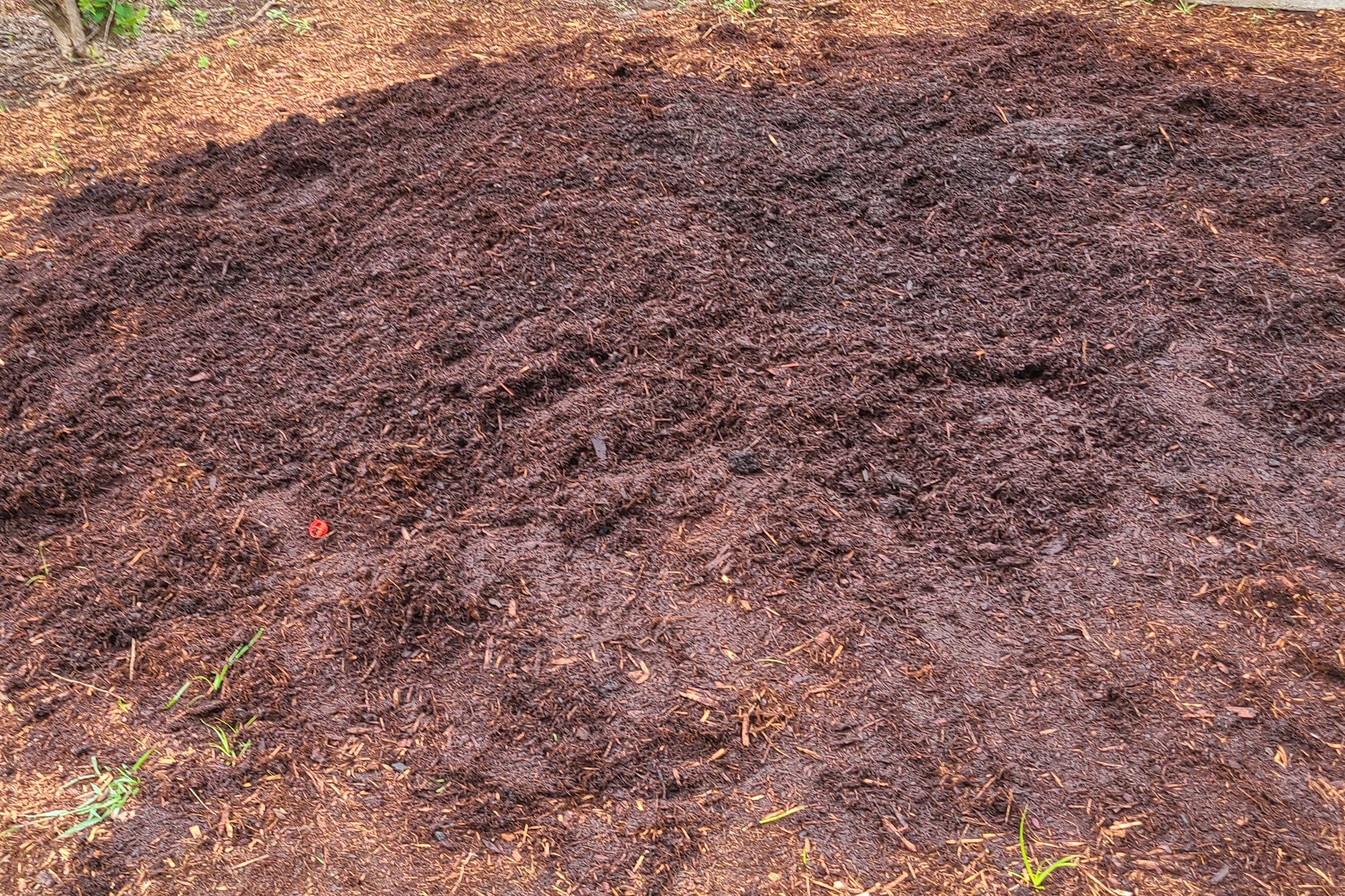In spring, gardeners will be starting to seek out materials like mulch, stone, compost and topsoil as a foundation or as a finishing touch for many projects. These materials can be sold in bags or as a bulk product. While the difference between the two may seem obvious, a gardener may select bagged or bulk materials based on many factors surrounding the project they are planning out.

Bagged materials are pre-measured and can be useful in multiple applications. Consumers can purchase topsoil, mulch, stone, soilless media, and other components of soil structure to amend their planting beds to their needs. Bags are often used for smaller scale solutions. Bagged materials are commonly sold in units of cubic feet, which conveniently fit into the trunk of a car for easy transport. Their packaging can allow for protection against contaminants or pathogens while it is being shipped and stored. Additionally, bagged materials can often include pre-measured additives like fertilizer, moisture control materials, or other materials to make its contents appropriate for its intended use.

Bulk materials can provide consumers with an opportunity to purchase larger quantities of material without the cost of packaging and disposable plastics. These applications are great for filling raised beds, mulching large areas, or replacing eroded soil. Gardeners can inspect the material, check the soil texture or color of the mulch, at the landscape center and, for an added fee, have it delivered to their home.
Basic algebra will help calculate how much material is needed for a project. Follow along with the example below to see how to calculate the exact quantity to purchase for your projects this spring:
Doing the Calculations
1. Using a measuring wheel or tape measure, measure and calculate the area of the space you want to mulch (length x width)
10ft x 10ft = 100 ft2
2. Multiply the area of your space by the depth of new material you want to add. For mulch, 3 inches is a common thickness to help prevent weeds, hold moisture and regulate temperature within the planting bed.
Remember it’s important to keep units the same. To keep this consistency, the example below, (inches), will be represented as 1/12th of a foot.
100ft2 x (3/12) ft = 25 ft3
3. Decide how you want to purchase your product and calculate what to buy.
3a. For Bagged Materials
Divide your cubic feet by the size of the bags you are considering purchasing (Most bags come in 1, 2 or 3 cubic feet)
Example: Purchasing bags that are 2 cubic ft in size
25 ft3 / 2 ft3 = 12.5 2CF Bags
*Round up to make sure you have enough material for complete coverage. Excess should be minimal.
3b. For Bulk Materials
Divide your cubic feet by 27 to discover how many cubic yards you need.
25 ft3 / 27 ft3 = 0.92 Cubic Yards
*Round up or down based on your overall gardening needs keeping in mind that materials are usually sold by the quarter, or half, or full yard.
If you’re intimidated by the math, don’t worry! The University of Maine has a good resource page that has further simplified these calculations. If we check the work we did against it, their recommendation will match at just less than one yard.
Lastly, consider how you want to complete your project. Do you want to save money? You may have to do more calculator work to figure out what kind of savings you are getting by using one instead of the other. Is this project on a deadline or do you want to spend less time running back and forth from the garden center? A delivery of bulk material would be your best bet. Would you need to rent a pickup truck? Does a pile of mulch in your driveway sound overwhelming and would you rather break your project up into manageable chunks? There is a lot to consider!
Whatever you decide, remember to use safe lifting techniques, stay hydrated, give yourself breaks, and know that the bottom of that pile gets closer with every shovel full!
By Heather Zidack, UConn Home & Garden Education Center

